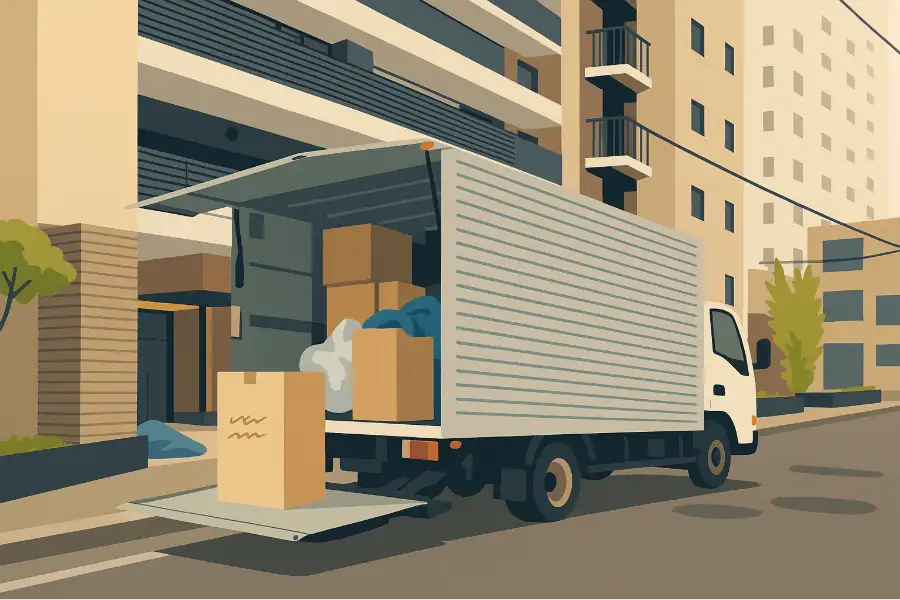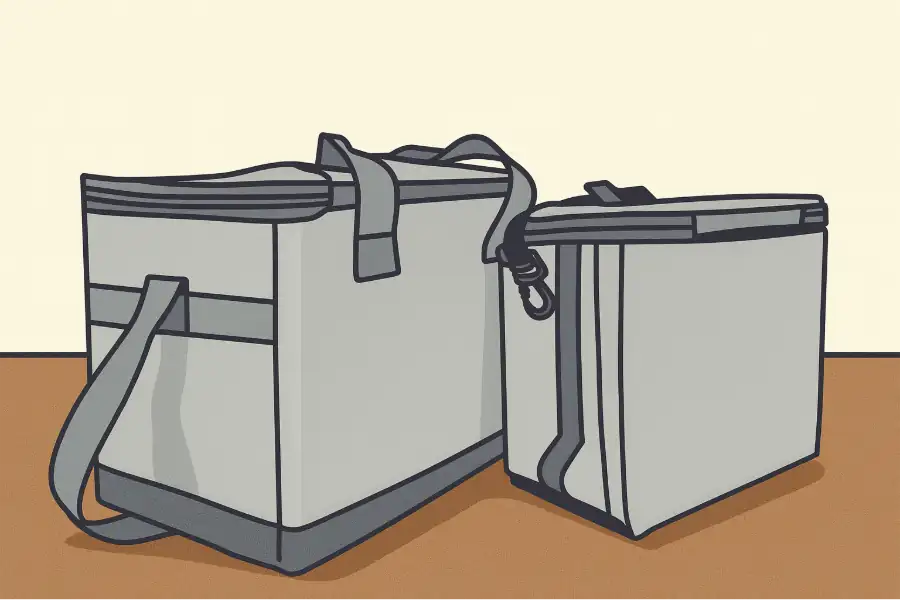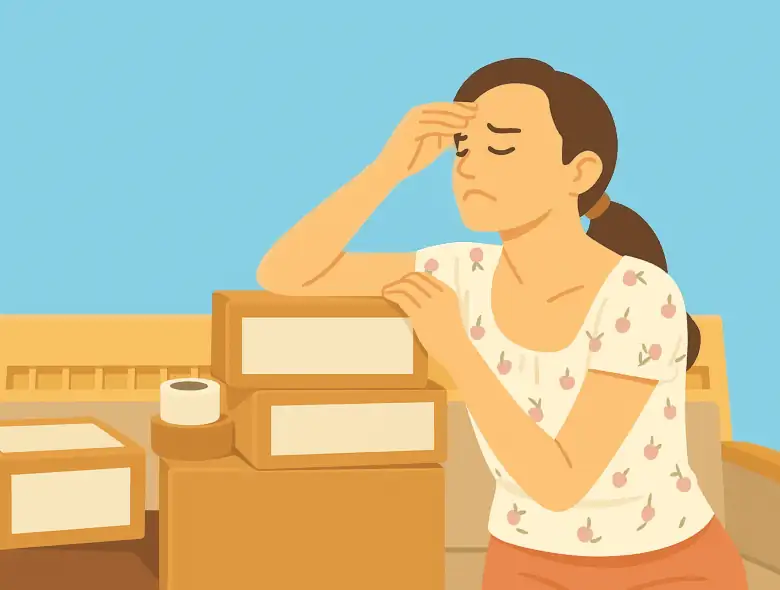Thinking of moving during the summer? You may be thinking of taking advantage of the time off or preparing for a fall transfer. While summer may seem convenient, it also comes with its own set of challenges. The intense heat increases the risk of heatstroke, and there are several problems unique to moving in hot weather that can catch you off guard.
In this article, we will explain how to prevent heatstroke and luggage troubles that come with moving in the summer. If you are planning to move in the summer, please refer to this guide.
Village House offers more than 1,000 affordable and wonderful properties starting from ¥ 20,000 throughout Japan. If you are looking for an apartment, please visit our website.
Heatstroke prevention during a summer move

If you’re planning a summer move, the biggest thing to watch out for is heatstroke. It’s not just uncomfortable but can also be dangerous. According to the Fire and Disaster Management Agency, nearly 98,000 people across Japan were taken to the hospital by ambulance for heatstroke between May and September 2024. That’s about a 20% increase compared to the year before.
Moving means spending a lot of time carrying things outside in the heat and working indoors without much airflow or air conditioning. This can quickly raise your body temperature. To keep things from getting serious, make sure to take the following precautions.
Heatstroke prevention tips to prepare in advance
- Check the weather forecast. If it predicts high temperatures on the day of the move, change the work to a cooler time, such as the morning or the evening
- Prepare cooling items (cooling spray, cooling sheets, ice packs, hats, etc.)
Important things to keep in mind when moving
- Hydrate frequently
(Room temperature water, sports drinks, and oral rehydration solutions are effective)
- Take frequent breaks in the shade or a cool room
- If you feel unwell, stop the work without pushing yourself, and if necessary, see a doctor
- Wear sweat-absorbing, quick-drying, or breathable clothing
- Wear a hat to avoid direct sunlight and prevent heat from building up
Tips to prevent sweat and moisture from damaging your luggage in summer

When moving in the summer, both the temperature inside the truck and in the rooms tends to rise, along with humidity levels. One thing to watch out for is condensation forming on your luggage which is often called “luggage sweat.” This moisture can cause serious problems like mold or discoloration on clothes, fabric items, paper documents, and even delicate equipment.
The main causes of moisture
- Condensation caused by temperature differences between the outside air and the inside
- Loading and unloading on rainy or humid days
- Lack of ventilation inside cardboard boxes
Tips to prevent moisture
- Use dehumidifiers and desiccants
Use silica gel or disposable dehumidifiers in cardboard boxes containing clothing, books, futons, etc. It absorbs moisture and prevents the generation of mold and odors.
- Don’t seal items too tightly in plastic bags
When you use highly airtight plastic bags, moisture inside can get trapped and cause problems. For items like bedding, it’s best to use breathable non-woven fabric bags for transport.
- Open the boxes and ventilate immediately
As soon as you arrive at your new place, open the cardboard boxes and dry them in a well-ventilated place. Leaving them damp can lead to mold growth.
- Use air conditioners and dehumidifiers
When moving into your new home, you can reduce indoor humidity by turning on the dehumidification mode of your air conditioner or dehumidifier in advance. This helps to dehumidify and prepare the environment when taking in your furniture and belongings.
- Choose the weather and time of day
It’s also a good idea to avoid the hot, humid midday hours and do your moving work early in the morning when temperatures are cooler. And if rain is in the forecast, be sure to have protective covers ready.
Pay attention to food storage to prevent food poisoning

Summer is a season when temperatures and humidity levels are high, and food spoils easily. During a move, refrigerators and freezers will be temporarily unusable, so you need to be very careful about managing your food. To prevent food poisoning, be aware of the following points.
Things to be careful of when transporting food
- For items that need refrigeration or freezing, pack them in coolers or insulated bags with plenty of ice packs
- To help maintain food temperature, wrapping items in newspaper or cushioning materials can provide extra insulation
- During transport, try to keep the food out of direct sunlight by placing it in the shade or a cool spot
Points to note when managing food in your new home
- As soon as you arrive, store perishable foods in the refrigerator or freezer and avoid leaving them out at room temperature
- For perishable foods, such as fresh foods and ingredients that need to be heated, consume them as soon as possible, or check their condition before deciding whether to dispose of them
- Even amidst the moving chaos, always check expiration and best-by dates, and don’t hesitate to throw away any expired items
The best time of day to move in summer

When moving in the summer, choosing the right time of day to work is especially important. By avoiding the hottest hours of the day, you can reduce fatigue and lower the risk of heatstroke. To ensure a safe and efficient move, be sure to keep the following points in mind.
Best time for a summer move
- Early morning to mid-morning (6am to 10am) is most recommended. The temperature is relatively low, making it easier to work and it is less stressful on the body.
- Particular care is needed in the afternoon (12 pm to 3 pm). This is the hottest time of the day. Your work efficiency drops, and the risk of heatstroke increases during this time.
- The temperature drops in the evening (after 5 pm). If working in the morning is difficult for you, you may consider this option. However, it becomes difficult to see well as the sun sets. So please be careful.
For more info, check out our blog: What Time of the Year is Best for Moving? Everything You Need to Know About the Difference Between the Slow and Busy Season!
What to pack in your moving day survival kit

For a smoother move, it is useful to prepare the following moving survival kit in advance.
Tools needed for moving
| Cardboard boxes | Basic items for sorting and transporting luggage. Having large, medium, and small cardboard boxes on hand makes packing smoother. |
| Packing tape | These are used to seal and secure cardboard boxes. The cloth type is strong, while the paper type is easy to cut and handle. |
| Newspaper | Can be used as a cushioning material for fragile items and to fill gaps. |
| Plastic bags | Good for preventing leakage in small items and liquids. |
| Cellophane tape | Used for small temporary fastenings and labeling. |
| Plastic string | Handy for bundling and securing items such as cardboard boxes and futons. |
| Scissors and cutters | Essential for cutting and opening packaging materials. A safe lock prevents injury while working. |
| Magic marker | Can be used to write the contents and destination on cardboard boxes. Bold oil-based markers are highly visible and convenient. |
| Work gloves | A must for protecting your hands when carrying luggage. Non-slip gloves make it safe to work with heavy items. |
| Tools | Necessary for dismantling and assembling furniture. With a screwdriver and hex wrench, you can get the job done. |
| Cleaning supplies | Used for cleaning when moving out and before moving into a new home. |
For more info, check out our blog: Moving Checklist: Everything You Need to Prepare for Your Move and a Great Start in Your New Home
At Village House, a deposit, key money, processing fee, or renewal fee is not required (※). If you’re looking to save on initial costs, don’t hesitate to contact us for more information.
※Please note that a deposit may be required depending on the specific terms of the contract and the results of the screening process.
Related articles:

Hello, I’m Machiko Doi, a freelance writer who writes about housing and living in Japan.
I live in an 80-year-old house that I inherited from my grandparents along with my two shelter cats and daughter.
We live a relaxed life while repairing the house.
I like to cook vegetables from the garden and fresh fish caught by my father, and enjoy them with cold beer on a hot day or hot sake on a cold day.



